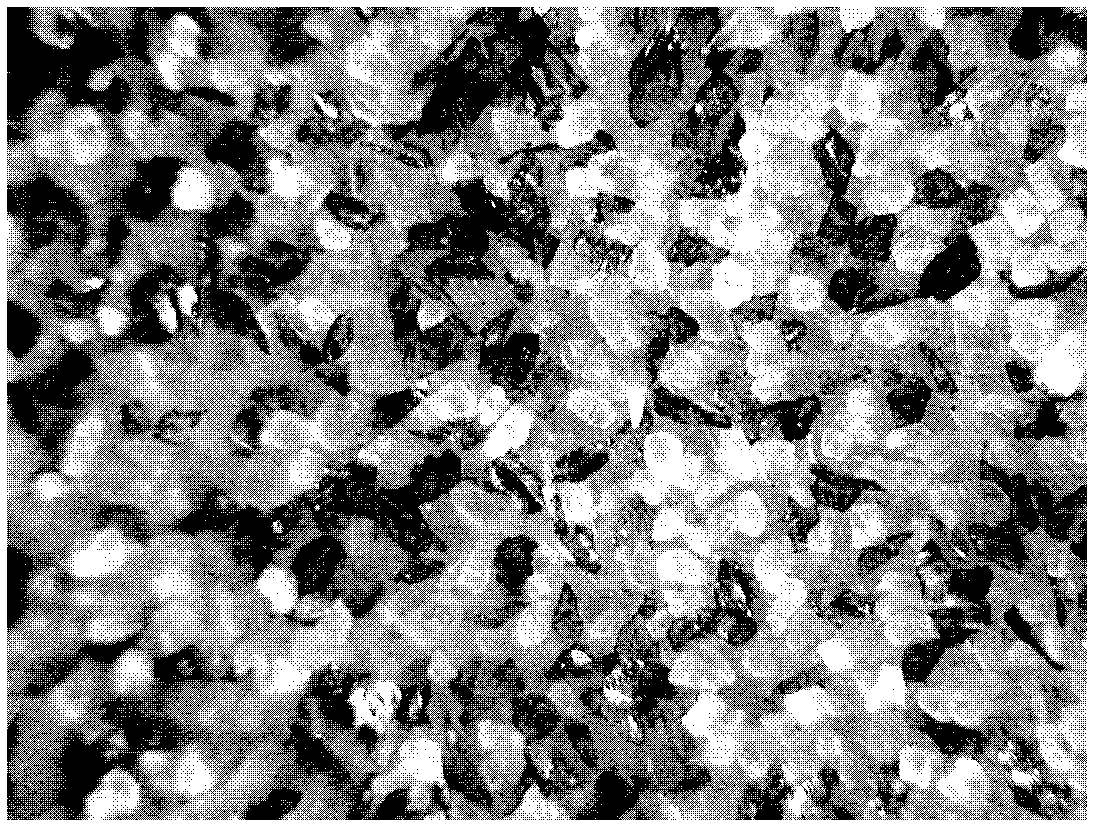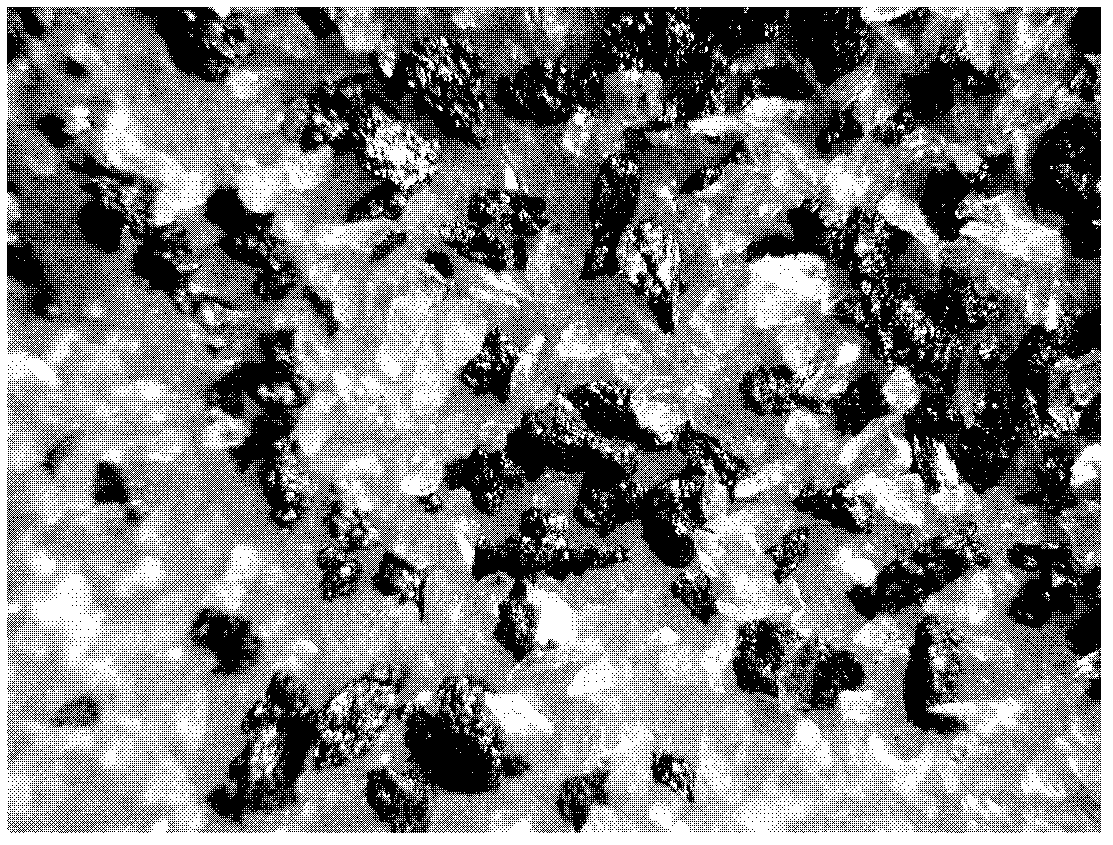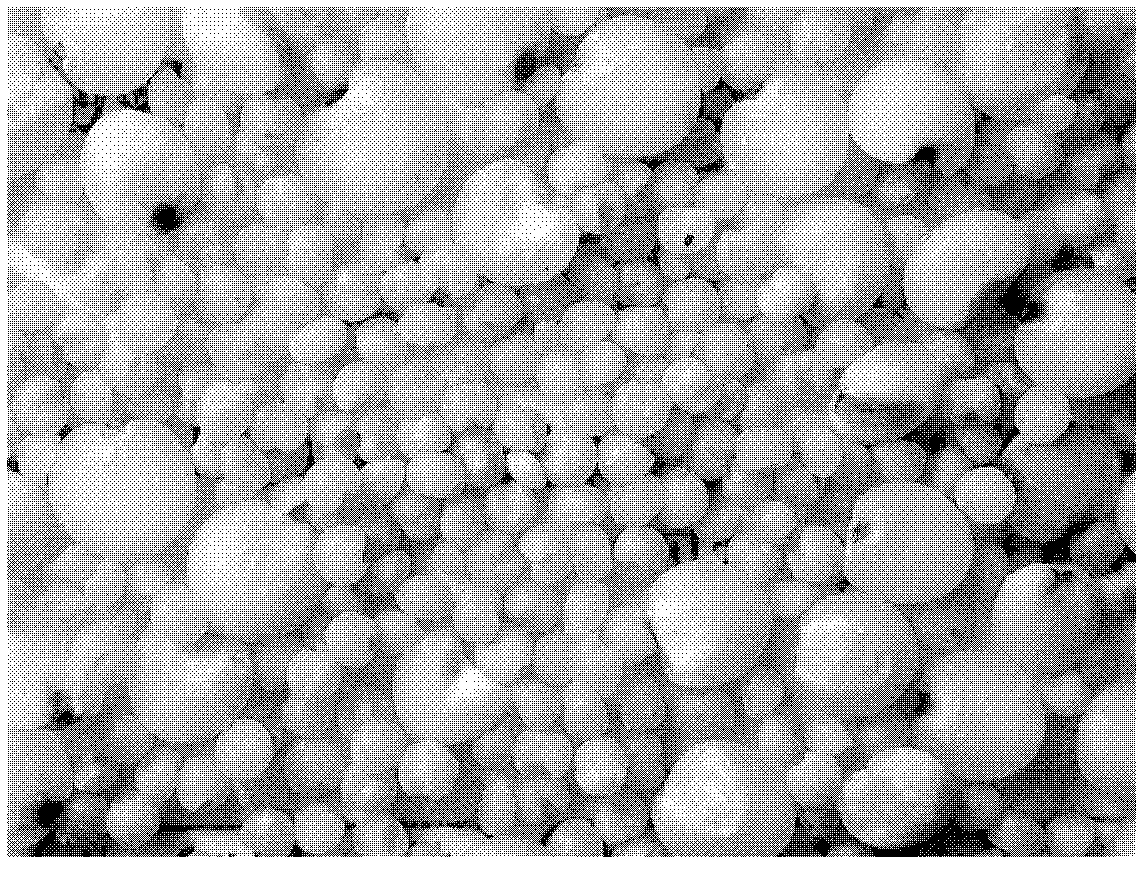Method for rapidly detecting mixing uniformity of powdery material
A technology of mixing uniformity and powder materials, applied in the direction of analyzing materials, instruments, etc., can solve the problems of narrow application range, poor representativeness, complicated steps, etc., and achieve the effects of rapid detection, simple operation, and strong reference value.
- Summary
- Abstract
- Description
- Claims
- Application Information
AI Technical Summary
Problems solved by technology
Method used
Image
Examples
Embodiment 1
[0045] Al with different particle sizes and equal mass ratio 2 o 3 powder was mixed with NaCl powder for 30 minutes.
[0046] Step 1. Determination of properties of mixed materials:
[0047] Two mixed materials Al 2 o 3 The particle sizes of NaCl powder and NaCl powder are 147 μm and 104 μm, respectively. 2 o 3 The massfraction of powder and NaCl powder is 50%;
[0048] Step 2. Sampling:
[0049] Randomly sample the material that has been mixed for 30 minutes, that is, take a circle with a diameter of 5 mm in the mixed material to intercept the powder sample, and then count the total number of particles contained in the circle to be 7697;
[0050] Step 3. Calculation:
[0051] Because it is a mixture of powders of different particle sizes,
[0052] m x =7697
[0053] C 0 = r 1 2 50%+r 2 2 50% = 0.147 2 ×0.5+0.104 2 ×0.5=0.006
[0054]Calculate the deviation
[0055] δ = | log ...
Embodiment 2
[0059] Al with the same particle size 2 o 3 Powder mixed with C powder, Al 2 o 3 The mass ratio of powder and C powder is 1:2, mix for 30 minutes.
[0060] Step 1. Determination of properties of mixed materials:
[0061] The particle size of the two mixed materials is 147 μm, and the Al 2 o 3 The mass fractions of powder and C powder are 33.3% and 66.7% respectively, and the theoretical density of each material is ρ Al2O3 is 4.0*10 -3 g / mm 3 , ρ c is 2.25*10 -3 g / mm 3 ;
[0062] Step 2. Sampling:
[0063] Randomly sample the mixed material after a period of time, that is, take a circle with a diameter of 5 mm in the mixed material to intercept the powder sample, and then count the total number of particles contained in the circle to be 9086;
[0064] Step 3. Calculation:
[0065] Because it is mixed with powders of the same particle size,
[0066] m x =9086
[0067] m x = 4 ...
Embodiment 3
[0074] Sorghum rice with different particle sizes and equal mass is mixed with millet.
[0075] Step 1. Determination of properties of mixed materials:
[0076] The particle sizes of the two mixed materials, sorghum rice and millet, are 1.6775mm and 0.67mm respectively, and the mass fractions of sorghum rice and millet are both 50%;
[0077] Step 2. Sampling:
[0078] Randomly sample the material that has been mixed for 3 minutes, that is, take a circle with a diameter of 14 mm to intercept the powder sample in the mixed material, and then count the total number of particles contained in the circle to be 759;
[0079] Step 3. Calculation:
[0080] Because it is a mixture of powders of different particle sizes,
[0081] m x =759
[0082] C 0 = r 1 2 50%+r 2 2 50% = 1.6775 2 ×0.5+0.67 2 ×0.5=1.631
[0083] Calculate the deviation
[0084] δ = | log M x ...
PUM
| Property | Measurement | Unit |
|---|---|---|
| Particle size | aaaaa | aaaaa |
| Particle size | aaaaa | aaaaa |
Abstract
Description
Claims
Application Information
 Login to View More
Login to View More - R&D
- Intellectual Property
- Life Sciences
- Materials
- Tech Scout
- Unparalleled Data Quality
- Higher Quality Content
- 60% Fewer Hallucinations
Browse by: Latest US Patents, China's latest patents, Technical Efficacy Thesaurus, Application Domain, Technology Topic, Popular Technical Reports.
© 2025 PatSnap. All rights reserved.Legal|Privacy policy|Modern Slavery Act Transparency Statement|Sitemap|About US| Contact US: help@patsnap.com



